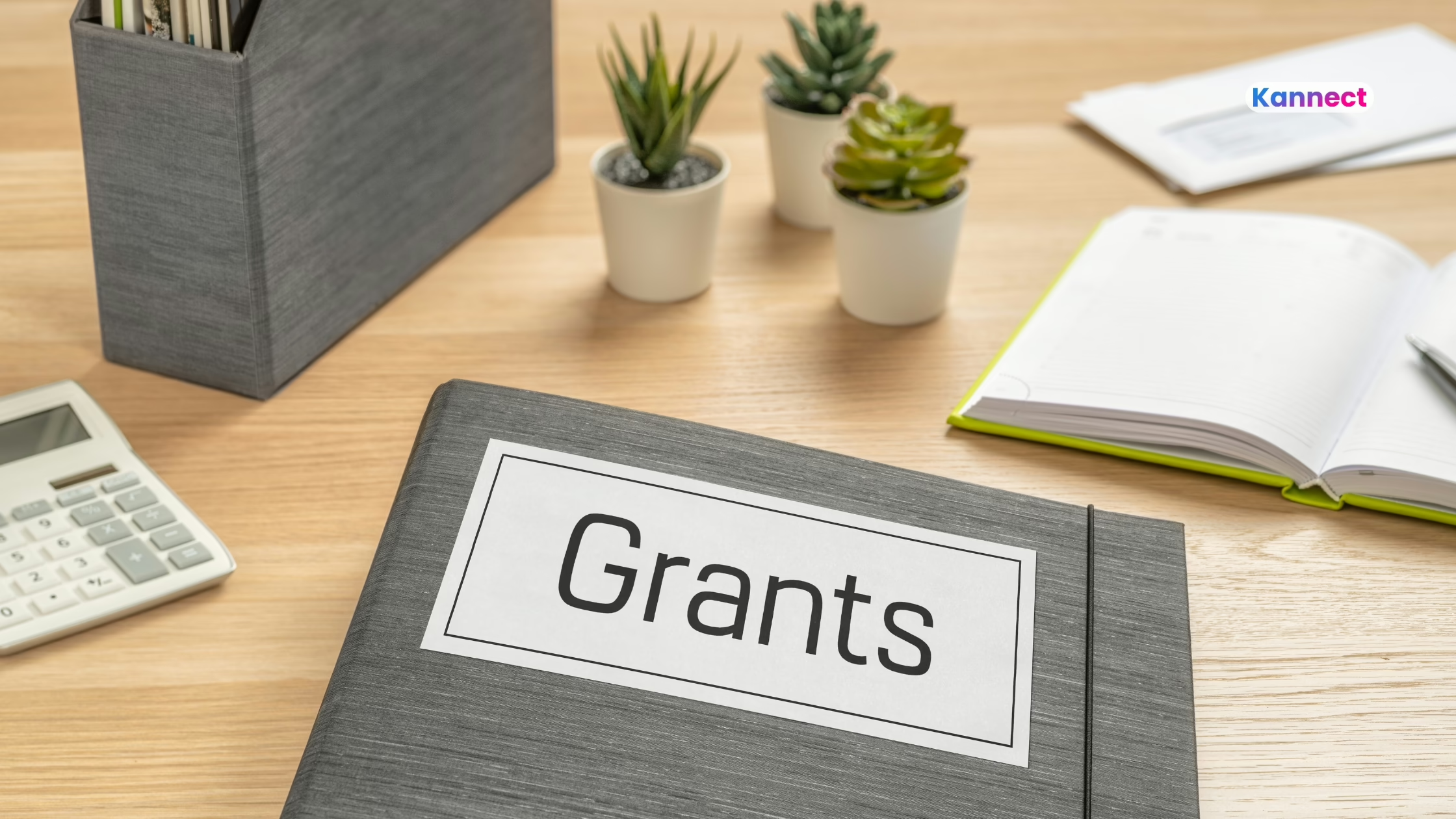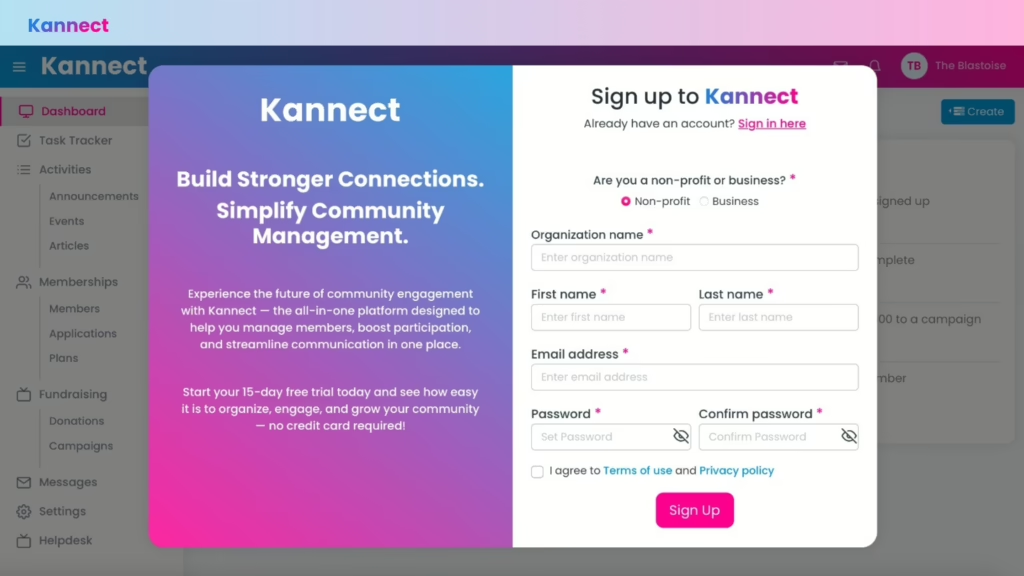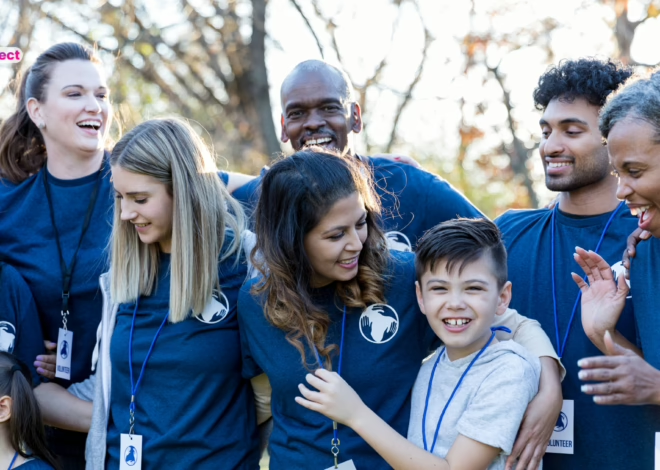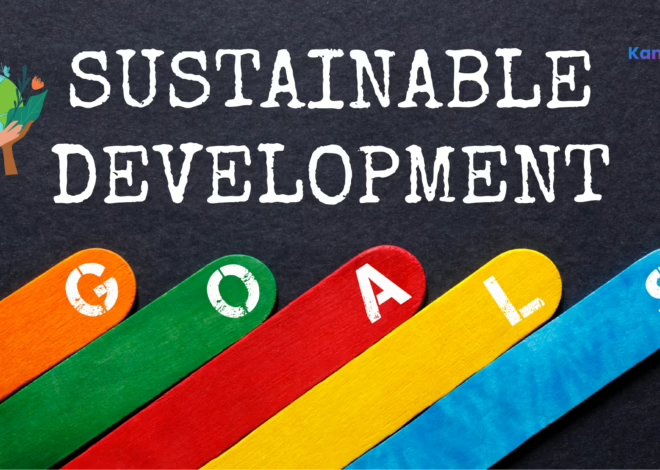
How to Get Grant for Nonprofit Organization: 6 Powerful Steps to Secure Funding Faster
Table of Contents
Funding That Fuels Your Mission
For nonprofits, a great idea is just the beginning. To truly grow impact, sustain programs, and serve your community, funding is essential. And few funding opportunities are more impactful than a grant for nonprofit organization.
Whether you’re running a local food bank, launching a new educational initiative, or expanding healthcare services in underserved areas, a grant for nonprofit organization can provide the financial boost needed to scale efforts, hire staff, purchase equipment, or launch new programs. It’s more than just money, it’s validation of your mission and trust in your vision.
Why Grants Are a Game-Changer
Unlike one-time donations or events, grants offer reliable and often substantial support that can transform operations. They can fund multi-year projects, cover overhead, and support strategic expansion. In fact, many of the most successful nonprofits attribute their growth to securing foundational grants that allowed them to plan long-term, invest in capacity, and deepen community impact.
But understanding how to get grant for nonprofit organization success takes more than good intentions, it requires preparation, clarity, and the right approach. From aligning with a funder’s goals to crafting proposals that stand out, the process demands both strategy and storytelling. Many nonprofits underestimate the planning involved or struggle to identify which grants are the right fit. The truth is, being “grant-ready” is a critical step in sustainable fundraising.
Smart Summary: What You’ll Learn in This Blog on Getting a Grant for Nonprofit Organization
In this guide, we’ll walk you through every step, making the complex simple and the process empowering.
Step 1: Get Clear on Your Mission, Programs, and Outcomes
Lay a strong foundation by clearly defining what you do, why it matters, and the impact you aim to make.
Step 2: Build a Strong Case with Data and Stories
Combine powerful statistics with real-life narratives to show both the logic and heart behind your nonprofit’s work.
Step 3: Research the Right Grants
Save time and boost results by identifying funders who align with your mission, capacity, and community needs.
Step 4: Prepare the Key Ingredients of a Winning Grant
From financials to goals to documentation, know what funders expect and how to deliver it well.
Step 5: Master the Art of Writing Clearly and Confidently (5 Simple Writing Guidelines to Strengthen Your Grant Application)
Write with clarity and purpose using simple, proven techniques that make your proposal easy to read and hard to ignore.
Step 6: Submit and Follow Up Thoughtfully (Quick Checklist: After You Submit)
Get organized, track submissions, and build lasting funder relationships with smart post-submission strategies.
5 Reasons Grant Proposals Fail (And How to Avoid Them)
Avoid the most common mistakes that stop great organizations from securing the funding they deserve.
How Kannect Can Help Streamline Grant Success
Discover how an all-in-one platform like Kannect helps you collect the right data, build trust, and showcase impact, all essential for winning grants.
From researching funders to writing a winning proposal and following up like a pro, you’ll be equipped to apply with confidence. You’ll also find tips on building strong relationships with funders, understanding common pitfalls, and using grant data to inform your overall fundraising strategy.
If you’ve ever wondered how to get grant for nonprofit organization growth that’s meaningful and lasting, this guide will show you how.
Let’s dive in.
Step 1: Get Clear on Your Mission, Programs, and Outcomes | Grant For Nonprofit Organization
Before applying for any grant for nonprofit organization, you must clearly define:
- What problem you solve
- Who you serve
- How you measure success
This foundational clarity is essential. Without it, even the best-written proposal can fall flat. Grant-makers aren’t just investing money, they’re investing in impact. They want to know that your nonprofit is focused, capable, and ready to deliver measurable results. Vague goals or overly broad missions often fail to resonate.
Take time to revisit your mission statement. Is it specific, inspiring, and outcome-oriented? Can you explain your key programs in just a few sentences? Most importantly, can you confidently show how your work leads to real change?
Grant reviewers look for alignment between your work and their mission. The clearer you are, the stronger your proposal.
💡 Pro tip: Align your language with grant guidelines. If a funder emphasizes “youth empowerment” and your nonprofit uses “youth engagement,” clarify how your work supports both concepts. This alignment helps funders see you as a fit for their goals.
🔶 Example: If your nonprofit works on youth mental health, you should be able to explain how your program reduces anxiety symptoms or increases school attendance and provide proof. That proof could come from surveys, attendance records, or third-party evaluations. The more you can quantify your outcomes, the more persuasive your grant application will be.
Why This Step Matters in the Bigger Picture
If you’re wondering how to get grant for nonprofit organization in a competitive landscape, this is your starting point. Clear missions attract the right funders. Well-articulated outcomes build confidence. And measurable success tells your story in a way numbers can back up. When you begin the grant process with clarity, the rest becomes easier to navigate.
Step 2: Build a Strong Case with Data and Stories | Grant For Nonprofit Organization
Numbers speak. But so do stories. A successful application for grant for nonprofit organization funding weaves both together.
Use local stats to show the problem (e.g., 1 in 5 youth experience anxiety).
Share short, personal stories of impact.
Tie every dollar requested to a clear result.
💡 Pro tip: Keep a bank of impact stories and data updated regularly. You’ll use it often.
Why This Works: The Head and the Heart
Funders need to see both the scale of the issue and the depth of your impact. Data helps paint the big picture; how widespread the problem is, who is affected, and what trends show. But stories bring that data to life. They help grant reviewers connect emotionally to your work, which is often what moves an application from the “maybe” pile to the “yes” pile.
Let’s say you’re applying for a grant for nonprofit organization focused on youth mental health. You might include a stat like “27% of local high school students report symptoms of chronic stress.” Pair that with a story: “After joining our weekly support group, Claire, previously missing school twice a week has now attended 95% of her classes and volunteers to help younger participants.”
This combination gives funders context, credibility, and connection.
Make It Tangible
To truly succeed in getting a grant for nonprofit organization applications approved, go beyond general goals. Break down how each dollar supports specific outcomes. For example:
- $500 funds weekly therapy sessions for 5 youth
- $2,000 helps print and distribute 200 toolkits for mental health awareness
- $10,000 launches a 3-month peer mentoring program
Specificity makes it easier for funders to say “yes”, they can see the direct return on their investment.
💡 Pro Tip: Don’t Wait Until You’re Writing the Grant
Collect stories and stats before you need them. Build a living archive of quotes, anecdotes, case studies, local data, and infographics. When it’s time to write your grant proposal, you’ll have powerful, ready-to-use assets that strengthen your narrative and speed up the application process.
Step 3: Research the Right Grants (Don’t Spray and Pray) | Grant For Nonprofit Organization
One of the biggest mistakes nonprofits make is applying to every opportunity. Instead, focus on fit.
Look for funders that:
- Support your issue area or region
- Fund nonprofits your size or type
- Have realistic application timelines
Use sites like Candid, Grants.gov, Instrumentl, or your local community foundation. This targeted approach boosts your success rate in getting a grant for nonprofit organization that fits.
Why Fit Matters More Than Volume
When learning how to get grant for nonprofit organization funding successfully, precision matters. Sending out dozens of generic applications might feel productive, but it often leads to burnout and rejection. Funders are looking for alignment; does your mission clearly match their priorities? Are your programs a natural extension of the work they want to fund?
Take time to review the funder’s past grantees, annual reports, and eligibility criteria. If they consistently fund organizations in education, and you’re focused on environmental justice, it’s probably not a match. Likewise, some grants are tailored to large institutions, while others are designed specifically for grassroots efforts.
How to Find High-Quality Matches
Use these strategies to identify grants that truly align with your organization:
- Candid’s Foundation Directory Online lets you filter by geographic focus, issue area, and type of support.
- Grants.gov is ideal for finding federal opportunities across sectors.
- Instrumentl provides matched results and tracking tools, helping you stay organized.
- Community foundations often fund smaller or emerging nonprofits and may be more accessible to local initiatives.
- Google Alerts can be set for phrases like “mental health grants in New York” or “2025 community development funding.”
The key to securing a grant for nonprofit organization is quality over quantity. Focus on crafting exceptional applications for a few well-matched grants rather than sending out dozens of generic ones.
💡 Pro Tip: Track and Organize Opportunities
Create a simple grants tracker in Kannect. Include:
- Grant name and website
- Deadline and decision timeline
- Funder priorities and past grantees
- Application requirements
- Notes on fit and next steps
This keeps your process organized and ensures you’re not missing critical deadlines.
Step 4: Prepare the Key Ingredients of a Winning Grant | Grant For Nonprofit Organization
Every grant is different, but most ask for:
- Executive Summary
- Problem Statement
- Program Design
- Evaluation Plan
- Budget & Narrative
- Organizational Capacity
Each of these components tells a different part of your story, and together, they help funders understand your mission, your plan, and your potential impact.
Break it down into sections and assign tasks if you’re working with a team. Always double check deadlines and file formats.
💡 Remember: Tailor each proposal to the funder. Generic proposals don’t stand out.
What Each Section Needs to Shine
- Executive Summary
This is your first impression. In one page or less, explain who you are, what you do, what you’re asking for, and why it matters. Make sure this section speaks directly to the funder’s goals.
- Problem Statement
What issue are you addressing, and why does it matter right now? Use current, local, or community-based data to show the urgency of the need. A well-written problem statement connects emotionally and logically.
- Program Design
Detail exactly how your nonprofit plans to address the problem. Outline your approach, timeline, target audience, and key milestones. This is where you make the case for how your work is both practical and powerful.
- Evaluation Plan
Explain how you will measure success. Funders want to know that their support will result in tangible outcomes. Use both quantitative metrics (e.g., attendance, improved test scores, meals served) and qualitative data (e.g., testimonials, stories).
- Budget & Narrative
A clean, itemized budget shows that you are thoughtful and transparent. Pair it with a narrative that explains each line, especially if it’s not obvious. Funders want to see that their money will be used wisely and efficiently.
- Organizational Capacity
Highlight your team’s experience, leadership, and track record. If you’re a newer organization, emphasize community partnerships or advisors who add credibility. Show that you are capable of delivering on your promises.
Writing With Confidence and Clarity
When applying for a grant for nonprofit organization, the writing style matters. Be clear, concise, and mission-driven. Avoid jargon unless the funder is highly technical. Make your passion readable on the page.
Double-check spelling, grammar, and formatting. Submit your proposal in the funder’s preferred format (PDF, Word doc, online portal) and follow all submission guidelines precisely. Sloppy applications are rarely funded.
💡 Pro Tip: Create a Grant Template Library
Even though you’ll tailor each proposal, many components (like your mission, org background, or bios) will be reused. Create a shared folder or document library where your team can store and access the latest versions of each core section. This saves time and keeps quality high.
Why This Step Matters
Understanding how to get grant for nonprofit organization means mastering the art of storytelling, planning, and financial clarity. When you prepare these key ingredients thoughtfully, you not only increase your chances of winning the grant, you also strengthen your organization’s overall strategy and confidence.
Step 5: Master the Art of Writing Clearly and Confidently | Grant For Nonprofit Organization
Your proposal should be easy to understand: no jargon, no filler. Use active voice and short sentences. Show, don’t just tell.
🔶 Example:
❌ Instead of “We aim to foster community integration in underserved populations,”
✅ Try “We help 200 low-income families access health services, education, and job training each year.”
Strong writing can set you apart, even if your organization is small or new.
Why Clear Writing Matters in a Grant Proposal
When applying for a grant for nonprofit organization, reviewers often have to read dozens, even hundreds, of proposals. Clarity is not a bonus, it’s essential. Funders should be able to understand who you are, what you do, and why it matters after just a quick scan of your executive summary.
A well-written grant stands out because it respects the reader’s time and communicates impact without fluff. It positions your nonprofit as credible, organized, and intentional.
5 Simple Writing Guidelines to Strengthen Your Grant Application
- Use plain language.
Even if your work is complex, your proposal shouldn’t be. Avoid academic or technical language unless absolutely necessary. - Be specific.
“We help youth” is vague. “We provide weekly mentorship to 75 at-risk teens in South Seattle” is powerful. - Focus on outcomes.
Don’t just explain your activities, explain what changes because of them. Funders want to fund results, not just effort. - Use numbers + narratives.
Say “300 meals served last month” and pair it with a story: “Jasmine, a single mom, said this program saved her family during winter.” - Edit ruthlessly.
Shorter is better. Every sentence should add value. Ask someone outside your team to read it and if they don’t get it, neither will your reviewer.
What Does This Have to Do with Grant Success?
One of the most overlooked parts of learning how to get grant for nonprofit organization funding is refining your writing. You may have a compelling mission and impressive impact, but if it’s buried in long-winded paragraphs or complex language, it might not get noticed.
Great grant writers don’t just write well. They write strategically. They anticipate what a reviewer needs to see and deliver that clearly and confidently.
💡 Pro Tip: Write Like You Talk to a Smart, Busy Friend
Imagine you’re explaining your nonprofit to a smart friend who has 10 minutes between meetings. That’s how clear and focused your grant proposal should be. You’re not dumbing it down, you’re making it easy to say yes.
A strong proposal doesn’t require big buzzwords or fancy formatting. It requires honesty, clarity, and heart. When you communicate your impact in real, relatable language, you increase your odds of getting the grant for nonprofit organization that could change everything.
Step 6: Submit and Follow Up Thoughtfully | Grant For Nonprofit Organization
After you submit your grant for nonprofit organization, don’t just wait.
- Confirm your application was received
- Note review dates and expected responses
- If declined, kindly request feedback
- If awarded, follow all grant requirements and reporting
Good relationships with funders can lead to multi-year support or referrals.
Why Post-Submission Matters as Much as the Proposal
Many organizations spend all their energy on writing the grant and forget that what happens next is just as important. Whether you’re trying to learn how to get grant for nonprofit organization funding for the first time or you’ve applied before, your follow-up process is a critical part of standing out professionally.
Funders often remember how grantees behaved after submission; especially how proactive, respectful, and communicative they were. A thoughtful follow-up shows that you’re serious, organized, and committed to partnership.
What to Do Immediately After You Submit
- Send a quick confirmation email.
If the platform doesn’t automatically confirm receipt, send a short email:
“We’re excited to submit our application for [Grant Name]. Just wanted to confirm it was received successfully.” - Log key dates.
Mark review timelines, announcement windows, and reporting requirements in your calendar. This shows professionalism and keeps your team aligned. - Organize all files.
Store your final proposal, attachments, and related emails in one central folder. That way, you’re ready for reporting or reuse if needed.
If You Don’t Get the Grant
Not every application leads to funding, but every one is a learning opportunity.
- Follow up with grace. Thank the funder for their time and ask (gently) if they’re open to providing feedback.
- Reflect internally. Were there gaps in data? A poor program-fit? Did you apply too close to the deadline?
💡 Keep a feedback tracker. Over time, this will help you refine your strategy and improve your chances of receiving a grant for nonprofit organization efforts in future cycles.
If You Do Get the Grant
Congratulations, but your work doesn’t stop here!
- Acknowledge and celebrate the award. Send a thank-you note and share the good news publicly if permitted.
- Review every requirement. Be clear on deadlines for progress reports, financial updates, or outcome data.
- Assign a team lead. Make someone responsible for managing grant reporting and communication.
Funders love when grantees are responsive, transparent, and data-driven. Fulfilling every requirement without being chased builds credibility for future support.
Build Lasting Relationships with Funders
Getting one grant for nonprofit organization support is great, building an ongoing relationship is even better. Foundations and institutions often fund multi-year programs or offer referrals to other grant-makers. They may also invite you to submit again in the next cycle or introduce you to capacity-building opportunities.
This kind of relationship doesn’t happen by accident. It grows from consistent, respectful, and proactive communication.
Quick Checklist: After You Submit
✅ Confirm receipt
✅ Log important dates
✅ Follow up if needed
✅ Say thank you (win or lose)
✅ Deliver on every promise
✅ Stay in touch with updates, not just asks
If you truly want to master getting a grant for nonprofit organization success, treat submission as the beginning and not the end of the conversation. Show funders you’re not just capable of managing funds, but also of building meaningful, lasting partnerships.
5 Reasons Grant Proposals Fail (And How to Avoid Them) | Grant For Nonprofit Organization
Even passionate, well-intentioned nonprofits can get turned down. Submitting a grant proposal is not just about telling your story, it’s about aligning with what funders actually need to see. Here’s a breakdown of the most common mistakes and how to fix them so your next grant for nonprofit organization application stands out for the right reasons.
1. The Problem Isn’t Clearly Defined
Funders want to know exactly what issue you’re addressing, for whom, and why it matters now. Vague descriptions like “we help people in need” don’t paint a compelling picture.
Fix it: Use specific, local data and real-life examples. Frame the problem with urgency and clarity.
🔶 Example: Instead of “Our program helps youth,” try “25% of teens in [County Name] report anxiety symptoms, yet only 1 in 10 receives support. Our peer-led program addresses this care gap head-on.”
2. The Budget Doesn’t Match the Proposal
One of the quickest ways to lose credibility is a mismatched or unrealistic budget. Funders want to see how every dollar will be spent and how it supports your outcomes.
Fix it: Align your numbers tightly with your narrative. If you’re requesting $50,000, show how each portion directly contributes to your project goals. Don’t overestimate costs or leave unexplained gaps.
💡 Tip: Always include a budget narrative, a short explanation of the “why” behind the numbers.
3. There’s No Evaluation or Metrics
A strong grant for nonprofit organization proposal must prove it can track success. Funders are investing in impact, not just effort.
Fix it: Include clear, measurable outcomes tied to your program’s goals. Explain how you’ll track progress (surveys, attendance, pre/post assessments, etc.).
🔶 Example: “Success will be measured by a 25% increase in school attendance among participants, monitored through monthly reports from partner schools.”
4. The Program Is Too Broad
Trying to solve everything at once can dilute your impact. If your program feels scattered or lacks focus, funders may worry it can’t deliver results.
Fix it: Focus your proposal on a single program or clearly defined phase. Narrow your scope, go deeper, and show exactly how the project will make a difference.
💡 Tip: Leave out side projects unless they’re directly relevant. Stay laser-focused on the proposal’s core goal.
5. Weak or Unclear Writing
Even the best idea can get buried under jargon, passive voice, or confusing structure. If reviewers can’t quickly understand what you do and why it matters, your proposal won’t make it far.
Fix it: Use plain language, short sentences, and active voice. Get straight to the point and write like a human, not a policy robot.
💡 Try This: Have someone outside your organization read the draft. If they don’t “get it” after one read, revise until it’s clearer.
You don’t have to be perfect but clarity, focus, and structure can dramatically improve your chances of winning a grant for nonprofit organization. When you truly understand how to get grant for nonprofit organization, you start building trust with funders. Think of each grant as a partnership, not a pitch. These fixes help you walk in as a well-prepared, confident applicant who truly knows their mission and value.
Bonus Tip: Build a Grant Calendar and System
Don’t treat grants as one-time efforts. The best nonprofits build a grant strategy. Here’s what to include:
- Monthly search for new opportunities
- A shared calendar for deadlines
- Templates for proposals and budgets
- A review checklist before submission
- Follow-up plan for reporting and future asks
This system makes it easier to repeat success, track progress, and stay ready for new opportunities.
How Kannect Can Help Streamline Grant Success | Grant For Nonprofit Organization
Winning a grant for nonprofit organization isn’t just about writing a great proposal. It’s also about showing you have the systems in place to deliver on your promises, manage timelines, track impact, and report outcomes clearly. That’s where Kannect gives you a distinct advantage.
Kannect gives nonprofits a strong foundation to win and manage funding more effectively. Here’s how:
✅ Event Management: Grants often fund community events, workshops, or educational programs. With Kannect, you can track attendance, collect participant feedback, and demonstrate event impact, all in one place. This makes post-grant reporting faster and more compelling.
✅ Task Management: Applying for a grant for nonprofit organization involves multiple moving parts: gathering data, drafting sections, coordinating with partners, meeting submission deadlines. Kannect lets you assign tasks, set reminders, and follow up on key milestones across your team. Everyone stays organized and accountable.
✅ Campaign Tracking: Whether it’s a capital campaign, a community fundraiser, or a donor-sponsored project, Kannect’s built-in campaign tools let you monitor progress, engagement, and outcomes. If your grant requires fundraising matches or blended funding, you’ll be able to show exactly how the money flows in and what it supports.
✅ Analytics: Funders don’t just want narratives, they want numbers. Kannect helps you collect, organize, and visualize the data that matters. From program outcomes to volunteer hours logged, you can create grant reports that speak clearly and powerfully about your impact.
✅ Communication Tools: Transparent communication is key to building funder trust. With Kannect, you can keep board members, grant writers, and program staff aligned in real time. Share updates, send reminders, and deliver progress summaries; all from a single, centralized platform.

Built for the Grants You’re Applying For
If your grant for nonprofit organization includes requirements around engagement metrics, storytelling, community outreach, or program scalability, Kannect helps you gather, present, and use that information meaningfully.
It supports your entire funding journey, from understanding how to get grant for nonprofit organization proposals noticed, to managing projects and reporting outcomes that impress.
No spreadsheets, no platform juggling. Just one intuitive system designed for growing, community-driven organizations.
Turning Every Grant for Nonprofit Organization into a Growth Opportunity
Even small or new organizations can win a grant for nonprofit organization if you show alignment, passion, and preparation. Funders aren’t always looking for flashy names or massive scale, many actively seek out grassroots nonprofits making a meaningful difference in their local communities. What matters most is that you demonstrate clarity in your mission and confidence in your plan.
A strong application isn’t just a funding request; it’s an introduction to who you are, what you stand for, and how you create change. When done well, applying for a grant for nonprofit organization can open doors far beyond the immediate opportunity. It positions your nonprofit as trustworthy, accountable, and impact-driven.
Many funders love working with grassroots nonprofits, they just need to trust that their investment will make a difference.
The best grants lead to long-term collaboration. Treat each application as a chance to introduce your work and build trust, whether or not you get funded this round. Even if you don’t receive the grant the first time, staying on a funder’s radar with consistent communication and updates may turn today’s “no” into tomorrow’s “yes.”
Every step in the grant journey is a chance to grow in capacity, in credibility, and in community.
Ready to apply for your next grant for nonprofit organization with more clarity, confidence, and capacity?
With Kannect, you don’t need to juggle spreadsheets, emails, and reporting tools to stay grant-ready. Track impact data, organize your team, manage events, and centralize communication, all in one place.
💡 Start your free account at Kannect today or book a demo to to see how Kannect helps modern nonprofits win funding and build long-term trust with every proposal.
✔️ Follow us on LinkedIn for tools, insights, and solutions that help nonprofits thrive.
✔️ Subscribe to The Community Engagement Playbook – one smart, actionable read delivered weekly to your inbox.
Try Kannect today

grants for nonprofits, grants to hawaii nonprofits, grants to usa, types of nonprofit grants, subscribe to the give, the give for good
FAQ: Answering your Questions on Grant for nonprofit organization
1. What is the first step to get a grant for nonprofit organization?
Start by clearly defining your mission, impact, and who you serve. This helps you find the right funders and write strong proposals.
2. Can a new nonprofit with no experience win grants?
Yes. New nonprofits can win grants if they demonstrate a clear need, a solid plan, and transparency. Start small with local or private funders.
3. How does Kannect support grant success?
Kannect helps nonprofits track engagement, document program outcomes, and manage teams, all useful in both writing and reporting grants.
4. Can Kannect help with donor management and campaigns too?
Yes. You can run donation drives, manage recurring gifts, and communicate with supporters, all in one place.
5. How long does it take to hear back after applying for a grant?
It varies. Some funders respond in weeks, others take months. Always check the timeline on the funder’s website and follow up respectfully.
6. Should I hire a grant writer?
If you can afford it and the grant is large, yes. But many small nonprofits succeed with clear writing and a solid internal team.



